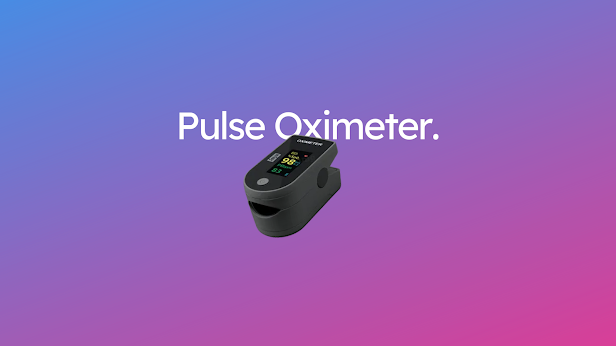Here’s everything you need to know about Pulse Oximeters from, what they are to why you should buy one.
Pulse Oximeters are everywhere. There's a sudden surge in sales of these oximeters. Mostly used in places like hospitals, it soon made it's way on literally everybody's home.
We'll analyse why is it so and how a pulse oximeters work and answer several other questions.

According to Healthline, Pulse oximetry is a non-invasive and painless test that measures your oxygen saturation level or the oxygen levels in your blood.
Oxygen saturation is the amount of oxygenated hemoglobin in the blood transported from the lungs to other vital organs. In simple words, the amount of oxygenated hemoglobin in oxygenated blood.
This device has gotten more popular during the pandemic, especially in the second wave. There’s always been a shortage of these clamp-like instruments for about a couple of months.
Why should you buy one of these right now?
The SpO2 reading on a pulse oximeter has something to do with the COVID-19. If the SpO2 read-out is less than 94, you should contact your local health care centers. Lower oxygen saturation levels are now officially recognized as a symptom of the dreaded COVID-19.
Before we continue with the benefits, take a look at how a pulse oximeter works.
How a pulse oximeter works?
During a pulse oximetry reading, a small clamp-like device is placed generally on a finger, earlobe, or toe. These devices contain IR (Infra-Red) blasters that emit beams of light)
Small beams of light from the IR blaster pass through the blood in our finger, measuring the amount of oxygen. It does this by measuring changes of light absorption in oxygenated or deoxygenated blood.
Not all Pulse oximeters can be placed on toes or earlobes. The pulse oximeter I have is specifically made to be placed on our fingers.
Why should you buy a pulse oximeter?
The pulse oximeter is not specific to CoVID-19. In fact, it can also be used to detect other respiratory diseases and oxygenated haemoglobin related sickness.
A pulse oximeter not only shows you the SpO2 readings but also BPMs and other health indicators. This makes the tiny device more useful.
Now that we’ve emphasised the benefits of having a pulse Oximeter; Let’s check whether you need a pulse oximeter or not.
Pulse oximeter is a good fit for anyone; Be it a healthy person, unhealthy person, active or the inactive ones. Pulse oximeter is always considered underrated. Maybe because they aren’t cheap.
Are mobile oximeters reliable?
Speaking of costs, mobile app based oximeters have become popular in recent times. They do work but they don’t seem to be very accurate.
Here's how it works. You already know that pulse oximeters use IR light to check the
And that is why it is not recommended medically. Taking risks in these tough times can be very crucial. I strongly recommend you to buy a good quality pulse oximeter either online, or offline.
What Oximeter should you buy?
I had no other choice but to buy a generic one as other oximeters were out of stock. The product has a sturdy plastic build and decent OLED dual color Display. It is generic, not something I would recommend, but it works decently. It isn’t instant, it takes up to 20 seconds to recognise my health levels.
I've used some generic and branded one's like Apollo's and both gives out the same reading, at least with the one's I've used. There are however few caveats. Here are those:
-
The branded one's analyses our SpO2 readings nearly instantly whereas the
generic one takes a good 20 seconds.
- The branded one's analyses readings after many inputs than the generic ones.
- The readings aren't very consistent on the generic one. As expected.
Final Verdict
This is the complete guide for oximeters, from what is a pulse oximeter to which oximeter should you choose. That’s everything I’ve got for today and I’ll catch you up in the next one.
Disclaimer
I've done my research from various notable authoritative sources like Healthline and then posted this. This contains some real life case studies like the generic versus branded oximeters comparison. For medical emergencies, visit your nearest hospitals. This is just opinions and basic internet research.
